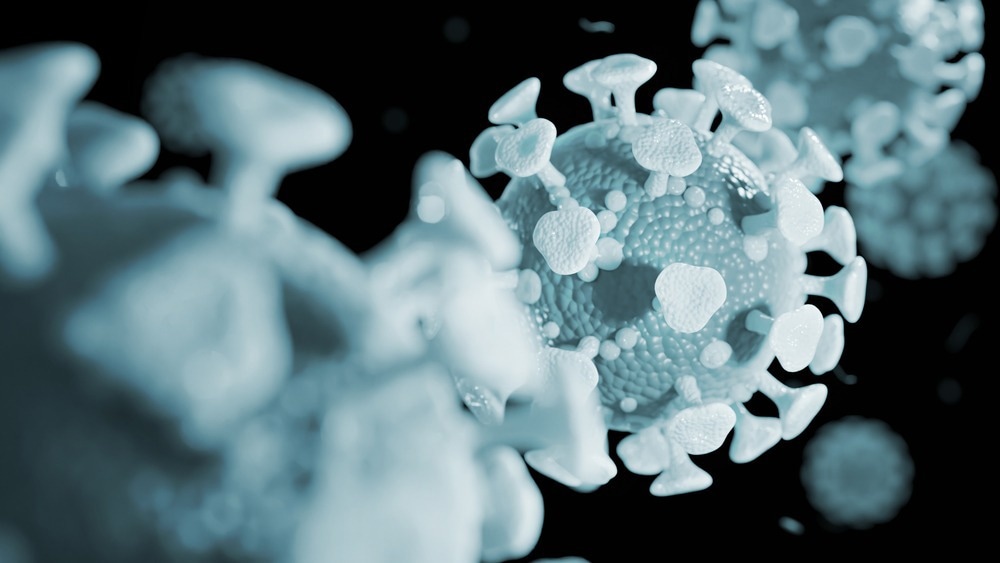In a recent study posted to the bioRxiv* preprint server, researchers established a neonatal mice model that enabled severe acute respiratory syndrome coronavirus 2 (SARS-CoV-2) transmission.
 Study: A neonatal mouse model characterizes transmissibility of SARS-CoV-2 variants and reveals a role for ORF8. Image Credit: Dotted Yeti/Shutterstock
Study: A neonatal mouse model characterizes transmissibility of SARS-CoV-2 variants and reveals a role for ORF8. Image Credit: Dotted Yeti/Shutterstock

 *Important notice: bioRxiv publishes preliminary scientific reports that are not peer-reviewed and, therefore, should not be regarded as conclusive, guide clinical practice/health-related behavior, or treated as established information.
*Important notice: bioRxiv publishes preliminary scientific reports that are not peer-reviewed and, therefore, should not be regarded as conclusive, guide clinical practice/health-related behavior, or treated as established information.
Background
Hamsters and ferrets are routinely used to model SARS-CoV-2 pathogenesis; however, both animal models lack genetic manipulation potential to assess host determinant factors of viral transmission. Therefore, the SARS-CoV-2 variant of concern (VOC)-specific amino acid substitutions and SARS-CoV-2-induced host mechanisms contributing to transmission is unclear.
Mice are cost-effective and widely available options with versatile genetic and reagent toolkits and fewer husbandry and regulatory challenges; however, SARS-CoV-2 transmission in adult mice has not been documented. The authors of the present study previously established four-to-seven days old neonatal mice as effective models for IAV (influenza A virus) transmission.
About the study
In the present study, researchers extended their previous analysis and presented a K18-human angiotensin-converting enzyme 2 (hACE2)-expressing neonate mice model that transmitted SARS-CoV-2 and examined previously and currently circulating SARS-CoV-2 VOC transmission.
The team characterized SARS-CoV-2 tropism, replication, and transmission of the SARS-CoV-2 Wuhan-Hu-1 (WA-1) strain compared to the Alpha, Beta, Gamma, Delta, and Omicron VOCs. They also characterized the transmission of two recombinant SARS-CoV-2 viruses, lacking open reading frame 6 (ORF6) or ORF8 accessory proteins. C57BL/6 (hACE2-/-) female and C57BL/6 K18-hACE2+/+ male mice and mice were combined to produce K18-hACE2+/- offsprings permissive to WA-1. Four- to seven-day-old index case pups were infected with WA-1 intranasally.
Pups’ survival and weight were monitored daily, and the shedding samples (nasal secretions) were obtained longitudinally from the index pups and pups in their close contact. Shedding kinetics for the upper respiratory tract (URT) were leveraged to assess viral infections, and weight reduction was denoted SARS-CoV-2-induced morbidity. Nasal shedding samples were subjected to quantitative reverse transcription-polymerase chain reaction (RT-qPCR) tests, and plaque assays were performed on VeroE6 cells overexpressing transmembrane protease serine 2 (TMPRSS2) and ACE2.
Immunohistochemistry (IHC) analysis was performed on the nasopharyngeal tissues of index pups, stained for SARS-CoV-2 nucleocapsid (N) protein. Infectious SARS-CoV-2 particles in retrotracheal lavages and lung homogenates were measured to assess viral tropism for the URT and lower respiratory tract (LRT), respectively. The cytokines present in the URT shedding samples of SARS-CoV-2-infected neonatal mice were also analyzed.
To assess SARS-CoV-2 transmission kinetics, the daily shedding of contact mice was used as a proxy for successful viral replication. Shedding samples were analyzed by multiplexed enzyme-linked immunosorbent assays (ELISA). Further, mice were infected with SARS-CoV-2 devoid of ORF6 (WA-1 ΔORF6), or devoid of ORF8 (WA-1 ΔORF8), and their shedding samples, retrotracheal lavage fluids, and lung samples were obtained to assess expelled SARS-CoV-2, URT replication, and LRT replication, respectively. The amount of infectious virus was quantified using plaque assays.
Results
K18-hACE2-expressing neonatal mice efficiently supported SARS-CoV-2 WA-1 transmission, and SARS-CoV-2 VOCs displayed distinctive tropism and dynamics of replication among the index neonates. ORF8 was found to be critical for successful SARS-CoV-2 transmission. Morbidity and mortality were offset in contact mice by two to three days compared to index mice, and SARS-CoV-2 ribonucleic acid (RNA) was detected in contact mice, indicative of SARS-CoV-2 transmission.
By four dpi, SARS-CoV-2 particles were shed by all the contact pups, representing 100% efficiency of WA-1 transmission and SARS-CoV-2 detection in the neonate mice shedding samples indicated robust SARS-CoV-2 infection in the upper airways. In addition, SARS-CoV-2-infected cells were identified in the upper olfactory epithelial cells, indicative of WA-1 replication in the URT.
Omicron-infected mice expelled SARS-CoV-2 at low levels. For the WA-1 strain, expelled SARS-CoV-2 titers were 105 plaque-forming units (PFU)/mL in upper airways but significantly greater titers (5 x 106 PFU/mL) in pulmonary tissues. At peak replication titers, WA-1 strain tropism progressed toward the LRT. On the contrary, alpha replication favored the URT. Viral loads in all shedding samples and corresponding retrotracheal lavage samples were similar. Except for Omicron, the model allowed for the replication and shedding of different SARS-CoV-2 VOCs at similar levels as WA-1.
After seven days post-infection (dpi), contact mice of Alpha and Delta infections displayed 100% mortality, whereas mortality rates for the WA-1 strain, Beta VOC, and Gamma VOC infections were 75%, 86%, and 56%, respectively. An index shedding titer threshold (≥1.2 x 104 PFU/mL) likely existed in the model to estimate transmission success to contacts. WA-1 strain, Beta VOC, and Gamma VOC infections, whose transmission differed in terms of onset, completion time, and completion level, resulted in overall similar cytokine responses.
WA-1 ΔORF8 expelled virus loads and URT virus loads were 5x102 or 1x103 PFU/mL, respectively, significantly lower than those for WA-1 or WA-1 ΔORF6, and infectious virus in index mice was still detectable by five dpi, indicating slower viral clearance in the absence of ORF8. WA-1 ΔORF8 transmission was incomplete until the experiment ended. Further, the maximum viral titer in WA-1 ΔORF8 contact mice was 7.5 x 103 PFU/mL, lower than that for WA-1 ΔORF6 and WA-1.
Conclusion
Overall, the study findings showed that the non-invasive, neonatal mice model can reveal the transmission dynamics inherent to the SARS-CoV-2 VOCs, except Omicron, and that ORF8 is critical for SARS-CoV-2 transmission.

 *Important notice: bioRxiv publishes preliminary scientific reports that are not peer-reviewed and, therefore, should not be regarded as conclusive, guide clinical practice/health-related behavior, or treated as established information.
*Important notice: bioRxiv publishes preliminary scientific reports that are not peer-reviewed and, therefore, should not be regarded as conclusive, guide clinical practice/health-related behavior, or treated as established information.